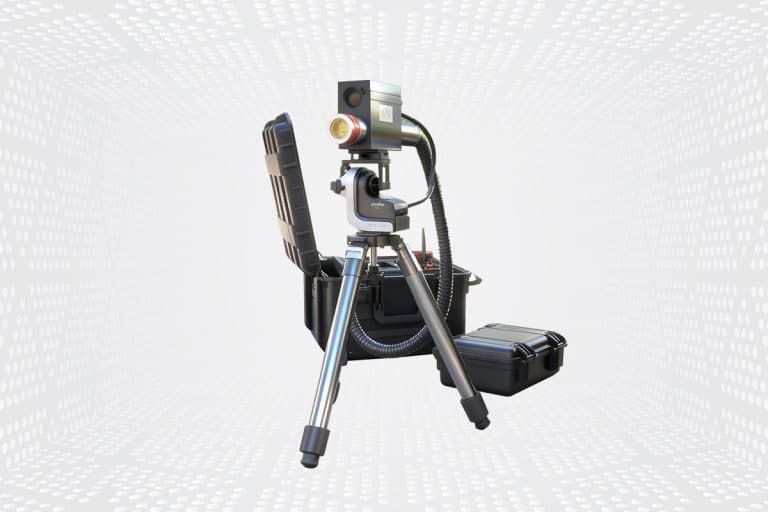Laser Obstacle Remover
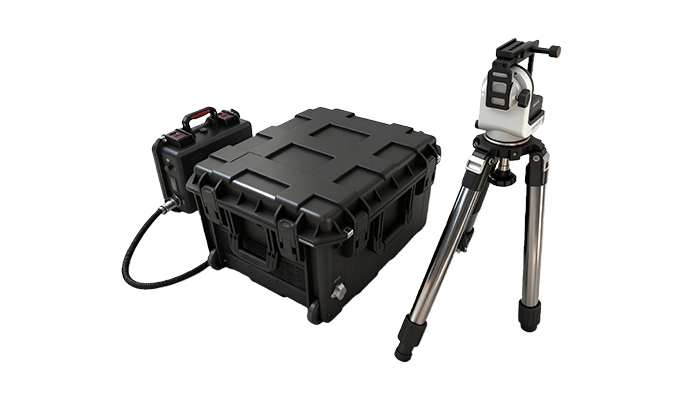
Product Range
Comparison VS Other Obstacle Removal Technologies
Laser Obstacle Removal vs. Water Jet Cleaning
Water jet cleaning relies on high-pressure water mixed with abrasives to clear surfaces or remove coatings. While effective, it consumes large amounts of water, generates slurry waste, and can erode underlying materials. Laser obstacle removal, by contrast, is completely dry and contact-free. It delivers pinpoint accuracy, faster processing speeds, and zero secondary waste—making it cleaner, safer, and more efficient, especially for sensitive or high-precision environments.
Laser Obstacle Removal vs. Infrared Ablation Systems
Infrared ablation systems use thermal radiation to vaporize material, but they often lack the power density and control of modern laser systems. Laser obstacle removers offer deeper penetration, faster removal rates, and better uniformity. Their focused beams minimize collateral heat effects, ensuring precise results on diverse surfaces without compromising integrity.
Laser Obstacle Removal vs. Shockwave Removal
Shockwave-based systems use high-energy pulses to dislodge obstacles mechanically. While powerful, this method can create vibration-related damage and is less precise in confined areas. Laser obstacle removal eliminates these issues—no mechanical impact, no tool wear, and minimal noise. It ensures controlled, targeted removal with superior safety and consistency, even in delicate or hazardous environments.
Why Choose AccTek Laser
Advanced Laser Technology
Our systems integrate the latest in laser innovation—offering superior beam stability, automated targeting, and intelligent control systems. The result is faster, cleaner, and more accurate obstacle removal with zero physical contact or surface damage.
Tailored Solutions
Every operational environment is different. That’s why we offer fully customizable configurations. Whether you need a compact portable unit or a high-capacity industrial system, we design it to match your exact requirements.
Energy Efficiency and Cost Savings
Our laser obstacle removers are built with energy-optimized systems that reduce power consumption without compromising performance. This translates to lower operational costs and greater environmental sustainability.
Unmatched Durability and Reliability
Constructed from premium-grade materials and rigorously tested, our machines are made to perform under demanding industrial conditions. Expect consistent results, reduced downtime, and long equipment lifespans.
Comprehensive Support and Training
From installation to daily operation, our expert team provides complete support—technical assistance, operator training, and maintenance guidance—to ensure seamless performance and maximum productivity.
Outstanding Value
We combine innovation, quality, and affordability. Our laser obstacle removers deliver premium performance at competitive prices, making us a trusted partner for industries seeking efficiency, precision, and long-term value.
Frequently Asked Questions
What Power Levels Are Available For Laser Obstacle Removers?
Laser obstacle removers are available in several power levels, each designed for different clearing intensities and operational needs. These systems range from precise, low-power models for delicate tasks to high-powered units capable of removing dense or metallic obstructions. Here’s how each power level performs:
- 500W: The 500-watt laser obstacle remover is best suited for light-duty applications. It effectively clears small debris, thin branches, and surface obstacles with controlled precision. This power level is ideal for users who prioritize energy efficiency and safety in low-intensity environments, where minimal thermal impact is desired.
- 1000W: At 1000 watts, the system delivers moderate cutting and ablation strength. It can remove thicker vegetation, light metals, and coated surfaces while maintaining steady precision. The 1000W model strikes a balance between performance and efficiency, making it suitable for routine obstacle removal and mid-scale field operations.
- 1500W: The 1500-watt laser offers enhanced power for tougher materials. It efficiently clears dense obstacles such as heavy branches, wires, or metallic barriers. This level offers faster operation and deeper penetration, making it often used in industrial or tactical settings that require consistent, high-output performance.
- 2000W: At the top end, the 2000-watt system provides maximum cutting force and clearing capacity. It can vaporize or sever thick metal objects, composite materials, and other high-resistance obstacles quickly and effectively. The 2000W laser is suited for demanding environments where speed, strength, and reliability are critical.
Laser obstacle removers across these 500W to 2000W power levels give operators flexible options — from precision clearing to large-scale removal. Selecting the right power output depends on the material density, operational environment, and desired cutting speed, ensuring safe and efficient performance in any field or industrial application.
What Is The Price Of Laser Obstacle Removers?
Laser obstacle removers are available in a range of power levels and price points, giving users flexibility to choose the right system for their specific operational and budget needs. Here’s a breakdown of each option and what it offers:
- 500W ($13,000 – $14,000): The 500-watt laser obstacle remover is the entry-level model, ideal for light-duty clearing tasks such as removing small branches, vegetation, and thin surface debris. It offers high precision and energy efficiency at an accessible cost, making it suitable for maintenance work or controlled environments where minimal power is required.
- 1000W ($17,000 – $18,000): At 1000 watts, the system delivers moderate cutting and removal strength, capable of clearing denser materials such as thicker branches, coated surfaces, and light metals. It strikes a balance between performance and affordability, making it a reliable choice for users needing versatility in both indoor and outdoor operations.
- 1500W ($24,000 – $25,000): The 1500-watt unit provides enhanced output and faster clearing speed for more demanding environments. It effectively removes heavy vegetation, metallic obstructions, and other high-resistance materials. This mid-tier system is popular in industrial, tactical, and infrastructure maintenance applications where durability and speed are priorities.
- 2000W ($33,000 – $34,000): The 2000-watt laser obstacle remover represents the highest power and performance level available. Designed for rapid, large-scale clearing, it can efficiently vaporize or cut through thick metals, wires, and other hard obstacles. Its superior beam penetration and precision make it ideal for heavy-duty use in advanced operational settings where maximum capability is required.
Laser obstacle removers across the 500W to 2000W range provide scalable performance and pricing options, ensuring users can select the most cost-effective solution for their specific clearance needs—whether for fine, precise work or powerful, high-capacity removal tasks.
Does Laser Obstacle Removal Produce Harmful Fumes?
Laser obstacle removal systems are highly effective for clearing various types of obstructions, but the process can produce fumes, vapors, and fine particles depending on the material being targeted. While most emissions are manageable, certain materials can generate harmful or irritating byproducts if proper precautions are not taken.
- Metal-Based Obstacles: When removing or cutting metallic objects such as cables, barriers, or hardware, laser ablation can release metal oxide fumes. These microscopic particles may contain compounds like aluminum oxide or iron oxide, which can irritate the eyes and respiratory system if inhaled. Proper ventilation or fume extraction systems should be used, especially in enclosed environments.
- Organic and Natural Materials: When lasers are used to remove vegetation, wood, or other organic matter, the process generates smoke, carbonized dust, and organic vapors. These are typically not toxic but can reduce air quality and visibility in the immediate area. Outdoor operations benefit from natural air dispersion, but operators should still position themselves upwind to avoid inhalation.
- Plastics and Synthetic Materials: The highest fume risk occurs when the laser interacts with plastics or synthetic coatings. Materials such as PVC, vinyl, and chlorinated polymers can release toxic gases, including hydrogen chloride and dioxins, when heated. These fumes are hazardous to both humans and equipment and should be avoided entirely unless verified as laser-safe materials.
- Dust and Particulate Formation: High-power laser removal can also create fine dust particles or soot as materials are vaporized. These particulates can remain airborne and should be captured using localized filtration or vacuum systems. In outdoor use, particles generally disperse quickly but may still warrant respiratory protection for operators.
- Operator Safety Measures: To minimize risk, operators should wear appropriate PPE, including laser-rated eyewear, respiratory protection (N95 or P100 masks), and non-reflective protective clothing. When working in enclosed spaces, fume extraction and air circulation systems are essential for maintaining a safe atmosphere.
- Environmental Considerations: Laser obstacle removal is environmentally clean when used on safe materials, but residues from toxic compounds or burned coatings should be properly collected and disposed of. Regular equipment cleaning helps prevent buildup from fume condensation or particulate accumulation.
In summary, laser obstacle removal can produce harmful fumes when certain materials are targeted, particularly metals with coatings or synthetic compounds. With proper ventilation, material verification, and protective equipment, the process remains safe, efficient, and environmentally controlled for both indoor and outdoor operations.
Is Laser Obstacle Removal Safe?
Laser obstacle removal systems are powerful and precise, and when used correctly, they are safe for both operators and the environment. However, like all high-energy laser technologies, safety depends on following proper procedures, using appropriate protective equipment, and maintaining a controlled operating environment.
- Laser Safety Classification: Laser obstacle removers typically fall under Class IV laser systems, which are capable of causing skin or eye injury if misused. Because of their high energy output, these systems must only be operated by trained personnel who understand laser safety protocols and control measures.
- Eye and Skin Protection: The most significant risk comes from direct or reflected laser exposure. Operators must wear laser safety eyewear rated for the specific wavelength and optical density (OD) of the laser in use. Direct skin exposure should also be avoided by wearing flame-resistant, non-reflective protective clothing that covers all exposed areas.
- Controlled Work Area: Laser obstacle removers should be used in a restricted, clearly marked area where access is limited to trained operators. The laser path must be kept free of reflective or shiny surfaces that could redirect the beam. Outdoor use requires extra caution to prevent accidental beam scattering or unintended exposure.
- Fire and Heat Risk: Because laser beams generate intense heat, there is a potential risk of igniting nearby flammable materials. Maintaining a clean workspace, using proper air assist systems, and keeping fire extinguishers nearby are important safety measures. Operators should never leave the system unattended while active.
- Fume and Particle Control: Laser removal can generate smoke, dust, or fumes, depending on the material being cleared. To ensure air safety, operators should work in well-ventilated environments or use fume extraction systems. When working outdoors, standing upwind of the beam path helps avoid inhalation exposure.
- System Safeguards: Modern laser obstacle removers are equipped with interlocks, emergency shutoff switches, and protective housings that reduce the risk of accidental exposure. Regular system checks and maintenance ensure these safety features function as intended.
- Operational Training: Safe operation depends heavily on comprehensive training. Operators must understand beam behavior, reflection hazards, and environmental considerations. Following laser safety standards such as IEC 60825 or ANSI Z136.1 ensures compliance with international safety guidelines.
- Environmental Safety: When used correctly, laser obstacle removal is an environmentally clean technology—it produces minimal waste and avoids the need for chemicals or mechanical contact. Proper fume management and responsible material selection make it both effective and eco-friendly.
In summary, laser obstacle removal is safe when operated under proper safety protocols. With trained personnel, appropriate PPE, controlled environments, and well-maintained equipment, these systems deliver powerful, precise, and secure performance in both industrial and outdoor applications.
What Are The Advantages Of Laser Obstacle Removal?
Laser obstacle removal offers numerous advantages that make it a highly efficient, precise, and environmentally safe solution for clearing or neutralizing obstructions. Its unique operating principles allow it to outperform traditional mechanical or chemical methods in both speed and accuracy. Here are the key benefits:
- Precision and Control: Laser obstacle removal delivers highly focused energy to a specific area, allowing precise targeting without affecting surrounding materials. This makes it ideal for clearing obstructions in sensitive or confined environments where accuracy and minimal collateral impact are essential.
- Non-Contact Operation: Unlike mechanical cutting or grinding, laser removal is a non-contact process. There is no physical wear on tools, no vibration, and no risk of mechanical shock to nearby structures or components. This feature greatly reduces maintenance needs and equipment downtime.
- High Efficiency and Speed: The concentrated laser beam enables rapid removal of materials, whether organic or metallic. It can vaporize, melt, or ablate obstructions in seconds, providing faster operational throughput compared to manual or chemical clearing methods.
- Versatility Across Materials: Laser obstacle removers can act on a wide variety of materials—metal, vegetation, composites, coatings, and debris—by adjusting beam intensity and focus. This flexibility makes them suitable for diverse applications, from field clearing to industrial surface preparation.
- Reduced Environmental Impact: Laser obstacle removal is a clean, eco-friendly technology. It eliminates the need for solvents, abrasives, or fuels, producing minimal secondary waste. Emissions are limited to localized vapors or dust, which can be safely managed through ventilation or filtration systems.
- Safety and Automation Compatibility: Modern systems can be integrated with remote controls, sensors, and robotic platforms, enabling safe, automated operation in hazardous environments. This reduces human exposure to potential danger zones, enhancing overall workplace safety.
- Minimal Maintenance Requirements: Because there are no consumables or mechanical cutting parts, maintenance primarily involves keeping the optics clean and ensuring cooling and alignment systems function correctly. This makes the operation cost-effective over time.
- Consistent Results: Laser systems offer repeatable, uniform performance, ensuring the same level of accuracy and effectiveness in every operation. Power settings and beam focus can be programmed for consistent results across multiple applications.
- Long-Term Cost Efficiency: Although the initial investment is higher than conventional tools, the low operating costs, absence of consumables, and long equipment lifespan make laser obstacle removal an economical long-term solution.
- Operational Flexibility: Laser obstacle removers can be deployed in both indoor and outdoor environments. Portable and vehicle-mounted configurations allow field operations, while stationary units are ideal for industrial or maintenance facilities.
In summary, laser obstacle removal combines precision, speed, and environmental safety with long-term reliability and low maintenance demands. It provides a powerful and modern alternative to traditional clearing methods, offering superior performance in diverse operational settings.
Can Laser Obstacle Removers Be Operated Outdoors?
Laser obstacle removers are designed to operate in a wide range of environments, and they can be safely and effectively operated outdoors when proper conditions and precautions are followed. Their durability, mobility, and non-contact operation make them particularly well-suited for open-field, industrial, and tactical applications.
- Outdoor Capability: Laser obstacle removers are built for field operation, where they are used to clear vegetation, debris, wires, and other obstacles from outdoor environments such as roadsides, powerline paths, and restricted zones. Their beam precision and energy control ensure efficient performance even in open or uneven terrain.
- Weather and Environmental Conditions: While these systems can function outdoors, operation should be avoided during rain, fog, or high humidity, as water droplets and airborne moisture can scatter or absorb the laser beam, reducing its effectiveness. Excessive dust or wind can also interfere with beam stability and alignment. For best results, lasers should be operated in clear, dry conditions with minimal atmospheric interference.
- Sunlight and Visibility: Strong sunlight does not affect the laser’s cutting ability but can make beam targeting and visual alignment more difficult. Operators often use optical sights, targeting aids, or infrared cameras to maintain accuracy under bright or variable light conditions.
- System Protection: Outdoor-rated models feature weather-sealed housings, temperature control systems, and dust-resistant casings to protect sensitive optical and electronic components. These enclosures allow the laser to maintain stable output even in challenging field environments.
- Power Supply and Mobility: Outdoor laser obstacle removers can be vehicle-mounted, tripod-supported, or portable, depending on application needs. Power is typically supplied by battery packs, field generators, or vehicle power systems, ensuring flexibility for remote operations where grid electricity isn’t available.
- Ventilation and Fume Dispersion: A major advantage of outdoor operation is natural air circulation. Fumes, smoke, or particulates generated during the removal process disperse quickly, reducing the need for artificial ventilation or filtration systems. Operators should remain upwind of the laser beam for optimal safety.
- Safety Measures: Even outdoors, strict safety protocols must be followed. The operational zone should be clearly marked to prevent unauthorized access. Reflective surfaces, such as metal poles or mirrors, must be kept out of the beam’s path to avoid accidental scattering. Operators must always wear laser safety eyewear rated for the system’s wavelength and power level.
- Maintenance After Outdoor Use: Following outdoor deployment, components such as the lens, mirrors, and cooling vents should be inspected and cleaned to remove dust, pollen, or moisture. Regular maintenance ensures consistent performance and prevents long-term optical degradation.
In summary, laser obstacle removers can be effectively operated outdoors under proper environmental conditions. With weather protection, safe power management, and adherence to standard laser safety procedures, they deliver precise, high-efficiency performance for field operations, infrastructure maintenance, and tactical obstacle clearing.
What PPE Is Required When Operating Laser Obstacle Removers?
Laser obstacle removers are powerful, high-energy systems that require strict adherence to safety protocols. The proper use of personal protective equipment (PPE) is essential to safeguard operators from laser exposure, debris, fumes, and other environmental risks during operation. Here are the key types of PPE required and their specific functions:
- Laser Safety Glasses: The most critical protective equipment is laser-rated eyewear designed for the specific wavelength and optical density (OD) of the laser being used. These glasses prevent retinal damage from both direct and reflected beams. Operators and anyone within the laser’s working area must wear approved safety glasses that meet standards such as ANSI Z136.1 or EN 207/208. Lenses should be inspected regularly for scratches or defects that could compromise protection.
- Flame-Resistant Clothing: Operators should wear flame-resistant, non-reflective garments that fully cover exposed skin. This prevents burns from stray reflections, thermal radiation, or sparks. Cotton or specially rated flame-retardant fabrics are preferred over synthetics, which can melt when exposed to heat. Long sleeves, full-length pants, and fitted cuffs are recommended for full-body coverage.
- Protective Gloves: Heat-resistant or leather gloves protect the hands from contact with hot materials, debris, and radiant heat generated during laser operation. Gloves also provide protection when handling recently ablated or vaporized materials that retain high surface temperatures.
- Respiratory Protection: Depending on the material being removed, fume and dust respirators may be necessary. When clearing metals, coatings, or organic materials, fine particulates and vapors may be released. N95 or P100-rated respirators are recommended to filter out microscopic particles and harmful gases, particularly in enclosed environments without dedicated ventilation.
- Face Shield (Optional): In addition to laser eyewear, a clear polycarbonate face shield can provide extra protection against flying debris, sparks, or splatter during obstacle removal. This is especially useful in outdoor or industrial applications where materials may react unpredictably under intense heat.
- Safety Footwear: Operators should wear closed-toe, non-slip, and heat-resistant safety boots. In industrial or field settings, steel-toe footwear offers additional protection from falling objects or equipment.
- Hearing Protection: While the laser itself operates silently, air-assist systems, ventilation units, or mechanical supports can generate significant noise levels. Earplugs or earmuffs may be required in high-noise environments to maintain hearing safety.
- High-Visibility or Field Gear (Outdoor Operations): For outdoor or tactical applications, high-visibility vests or tactical protective clothing improve situational awareness and allow safe coordination among multiple operators.
- Additional Safety Accessories
- Heat-resistant aprons may be used in stationary setups.
- Protective caps or headgear can shield the scalp and neck from indirect exposure.
- Glare shields or barriers can be installed around the work area to block stray reflections.
Using the correct PPE ensures operators remain fully protected from optical, thermal, and environmental hazards, allowing laser obstacle removers to be used safely and effectively in both industrial and field operations.
What Is The Service Life Of Laser Obstacle Removers?
Laser obstacle removers are engineered for long-term, high-performance operation, offering a service life that typically ranges from 80,000 to 100,000 working hours, depending on the laser type, power level, and maintenance practices. Their durability and reliability make them a cost-effective solution for both industrial and field applications.
- Laser Source Lifespan: The core laser module—the system’s primary energy source—has the greatest influence on overall lifespan. Fiber lasers, which are commonly used in obstacle removers, feature solid-state construction with minimal moving parts and excellent thermal stability, allowing continuous operation for tens of thousands of hours. Regular cooling and stable power input help maintain consistent performance throughout their service life.
- Optical Components: Components such as lenses, mirrors, and protective windows can experience gradual wear due to heat exposure, dust accumulation, or micro-abrasion from airborne particles. With proper cleaning and environmental protection, optical parts can last several years before requiring replacement. Protective glass covers and air-assist systems extend their lifespan significantly by shielding optics from debris.
- Cooling and Power Systems: Efficient cooling is essential to preserving laser lifespan. Water-cooled systems require periodic coolant replacement and filter maintenance to prevent scaling or corrosion. Air-cooled units need regular vent cleaning and airflow checks. Proper cooling ensures the laser module maintains stable temperature control, preventing power fluctuations that could shorten its service life.
- Electronic and Mechanical Components: Laser obstacle removers contain precision controllers, alignment assemblies, and mechanical supports that are built for durability. Routine inspections, alignment checks, and firmware updates keep the system performing reliably over many years of operation.
- Environmental Factors: Operating conditions have a major impact on longevity. Systems used in clean, temperature-stable environments will last longer than those exposed to high dust levels, moisture, or extreme temperatures. When used outdoors, protective housings and environmental seals help preserve internal components from wear or corrosion.
- Maintenance and Calibration: Regular maintenance, optical cleaning, and calibration directly influence lifespan. By ensuring stable output power and accurate beam focus, operators can prevent premature degradation. Following manufacturer maintenance schedules and replacing worn parts proactively can extend service life well beyond standard expectations.
- Performance Consistency: Even after thousands of hours, well-maintained laser obstacle removers maintain high beam stability and output efficiency. Modern fiber lasers are designed to maintain over 90% of their original power after years of continuous operation.
In summary, laser obstacle removers are built for long operational lifespans, offering consistent power, reliability, and efficiency for nearly a decade or more. With regular maintenance, clean operating conditions, and adherence to manufacturer guidelines, they deliver dependable performance for both industrial and outdoor obstacle removal applications.
Related Resources
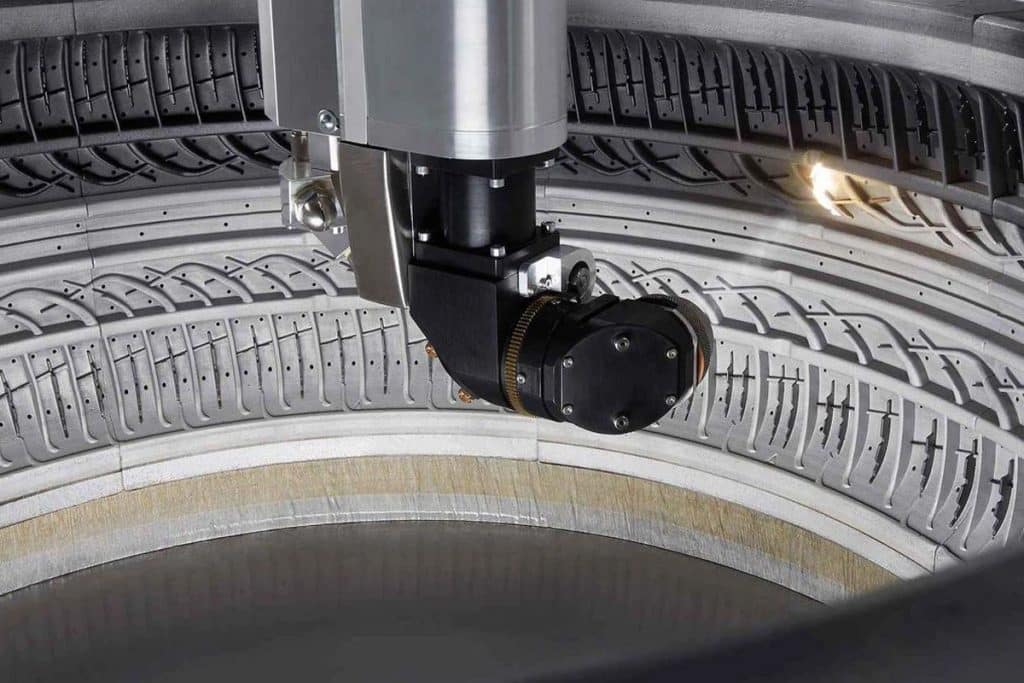
What Precautions Should Be Taken During Laser Cleaning?
Laser cleaning machines, with their efficient, environmentally friendly, non-contact cleaning methods and comprehensive safety, protection, and maintenance systems, can provide industrial enterprises with high-quality, sustainable surface treatment solutions while ensuring
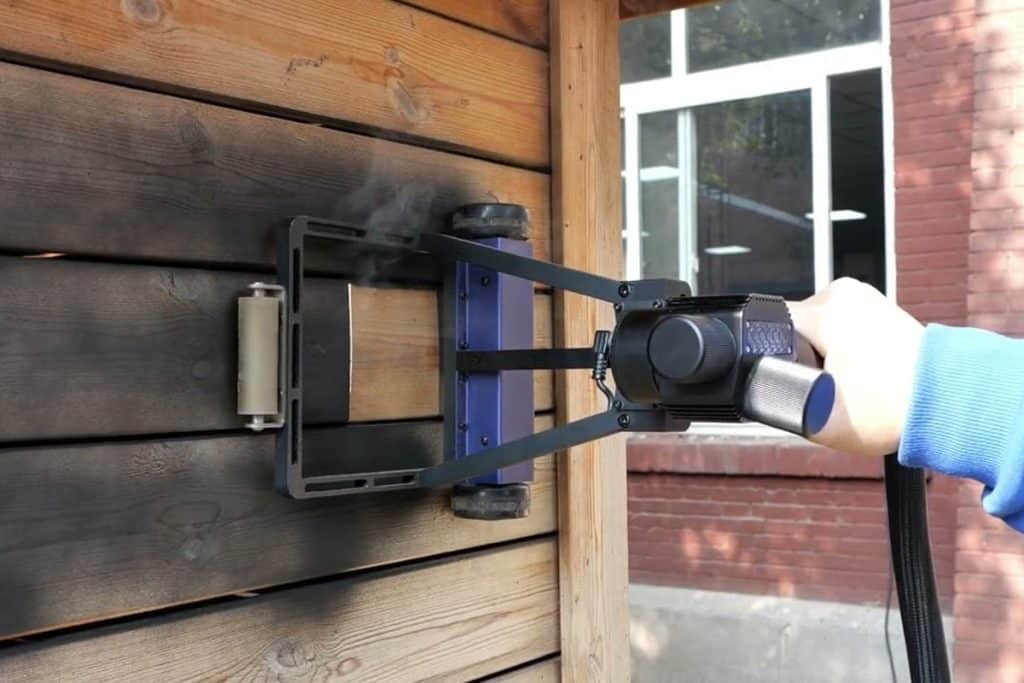
Understand How Laser Parameters Affect the Cleaning Process
This article mainly introduces the influence of key parameters in the laser cleaning process on the cleaning effect of different materials, and proposes an optimization scheme to achieve efficient and
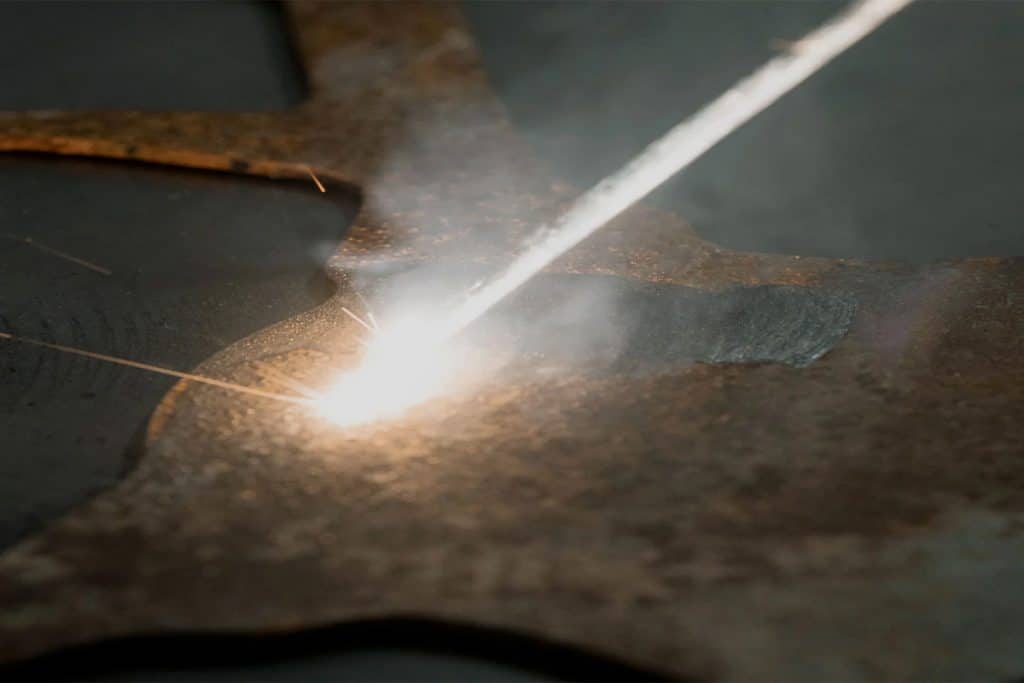
Laser Cleaning Machine Cooling System Maintenance Guide
This article systematically introduces the components of a laser cleaning machine’s cooling system, common problems, and key maintenance points, helping you ensure continued efficient and safe operation of your equipment.

